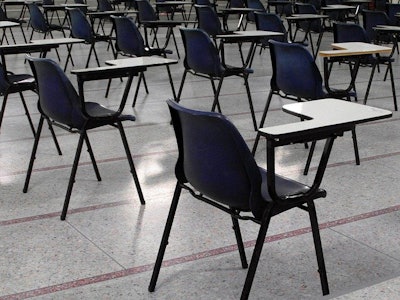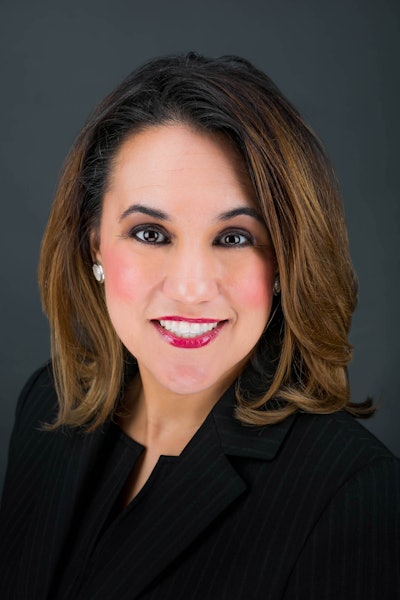As the COVID-19 pandemic continues to affect the higher education sector, concerns arise around enrollment rates. More specifically, at community colleges.

“I think there is just a great deal of concern in the community college field right now that those students may really be a lost generation to college going in general,” says Dr. Thomas Brock, director of the Community College Research Center (CCRC) at Teachers College, Columbia University. “We know from past work that the longer students delay starting college, particularly after high school, the less likely they are to begin or to complete college. So that is just a very big worry.”
Based on educational attainment, the average earnings for full-time employees include $31,315 for less than a high school diploma, $40,510 for a high school diploma, $50,079 for an associate degree and $65,374 for a bachelor’s degree, according to the American Association of Community Colleges (AACC).
“A community college degree is worth it,” Brock adds. “We have lots of evidence to that effect. I understand the challenges community college students are facing right now on every level, from health concerns to trying to take classes online and just balance, family and jobs, personal responsibilities. But it really is worth the effort, even if you’re having to shift to online courses.”
Though many community colleges are still following budgets that were set before the pandemic, the decrease in enrollment could create upcoming financial trouble.
“Community colleges are enrollment driven really in every state,” says Brock. “So as their enrollments decline, that will likely mean that state budgets and local budgets that support community colleges will decline. And states themselves are in a difficult spot with probably lower tax revenues and they will be looking for places to cut. We have not really seen this yet, but I think it is a big worry for next year and beyond.”
By the numbers
What is causing these enrollment declines?
The community college student population is 26% Hispanic, 13% Black, 45% White and 6% Asian Pacific Islander. Additionally, 59% of community college students receive some type of aid, according to AACC.
Since community colleges predominantly serve low-income and underrepresented populations, students face financial barriers.
As the COVID-19 pandemic progressed, unemployment rates peaked at 14.7% in April, the Bureau of Labor Statistics reported. With 62% of full-time and 72% of part-time students working while attending community colleges, many of their financial circumstances changed.
To provide emergency assistance to students, the Higher Education Emergency Relief Fund (HEERF) was created under the Coronavirus Aid, Relief, and Economic Security (CARES) Act. It gave more than $14 billion in funding to the higher education sector.
 Dr. Linda García
Dr. Linda GarcíaHowever, Dr. Linda García, executive director of the Center for Community College Student Engagement at the University of Texas at Austin, acknowledged that many students were left out under the CARES Act and more financial support should be provided to postsecondary institutions.
“We must look at the student holistically because they have challenges outside of the classroom,” she says. “They are trying to pay rent, trying to find ways to feed themselves and their family. When we can help them take care of that, these students are more likely to engage in their academic career. They are more likely to persist when we can help them holistically.”
Outside of affordability, many students lack access to technology and Wi-Fi in their homes. However, even if students do have the necessary technology, they might not have a quiet or private space to complete their school assignments.
Though many faculty members want to engage with their students through video during class, not all students do. For some students, the only place to work could be in a closet, making them feel insecure about their backgrounds, according to García.
“It is all about being sensitive to the students, these students are trying to survive and they need support from the colleges,” she says.
In an attempt to mitigate some of the access issues, community colleges across the country have created Wi-Fi hotspots in parking lots where students can work out of their cars.
“There are a lot of creative things that are going on,” says Dr. Martha M. Parham, senior vice president of public relations at AACC. “But I think that communication directly with students, letting them know that community colleges are still there for them [is also important].”
The transition from in-person instruction to virtual courses also created challenges.
Some faculty members were not equipped to teach online. Many of the courses at community colleges are hands-on and career oriented, making it difficult to teach virtually. Take health care, for example.
“You need to be working with patients or work with dummies, learning how to administer shots and medicine and deal with people who are bedridden,” says Brock. “That can only go so far in an online course format. Likewise, emergency medical workers and a lot of functions related to manufacturing and other kinds of occupational fields that community colleges specialize in are just hard to do online. I think faculty are doing their best, but you can only go so far.”
Additionally, the online format made it difficult for students to balance family, work and school. The average age of a community college student is 28 and 15% are single parents, according to AACC.
“We are hearing from students that remote learning is not the ideal learning situation for them,” says Parham. “They prefer in-person classes.”
Concerns over COVID-19
Another potential cause of enrollment decline is safety concerns.
Households with community college students or prospective students are much more likely to report that either someone in their household tested positive for COVID-19 or were concerned about the virus, according to Brock.
Faculty members also share similar sentiments.
“They are potentially on the front lines, maybe not as much as health care workers,” says Brock. “But nonetheless, if you are in front of a classroom, there are worries about their own health, their own safety of catching COVID.”
He suggested schools continue to take additional precautions to create a safe environment for the campus community.
With all the changes, García advised students to stay connected to faculty or staff members.
“Reach out to them, let them know what you are experiencing,” she says. “The more they know what students are going through, they are more likely to find a way to help them through this process.”
As for the spring semester, similar enrollment declines are anticipated.
“I think maybe by next fall [we might see some changes],” says Brock. “Particularly if the vaccine is available and if community colleges, in particular, just do a more effective job of kind of informing students about their options and selling, if you will, what they have to offer. Perhaps they can mitigate some of these declines.”
This article originally appeared in the December 10, 2020 edition of Diverse. You can find it here.





















